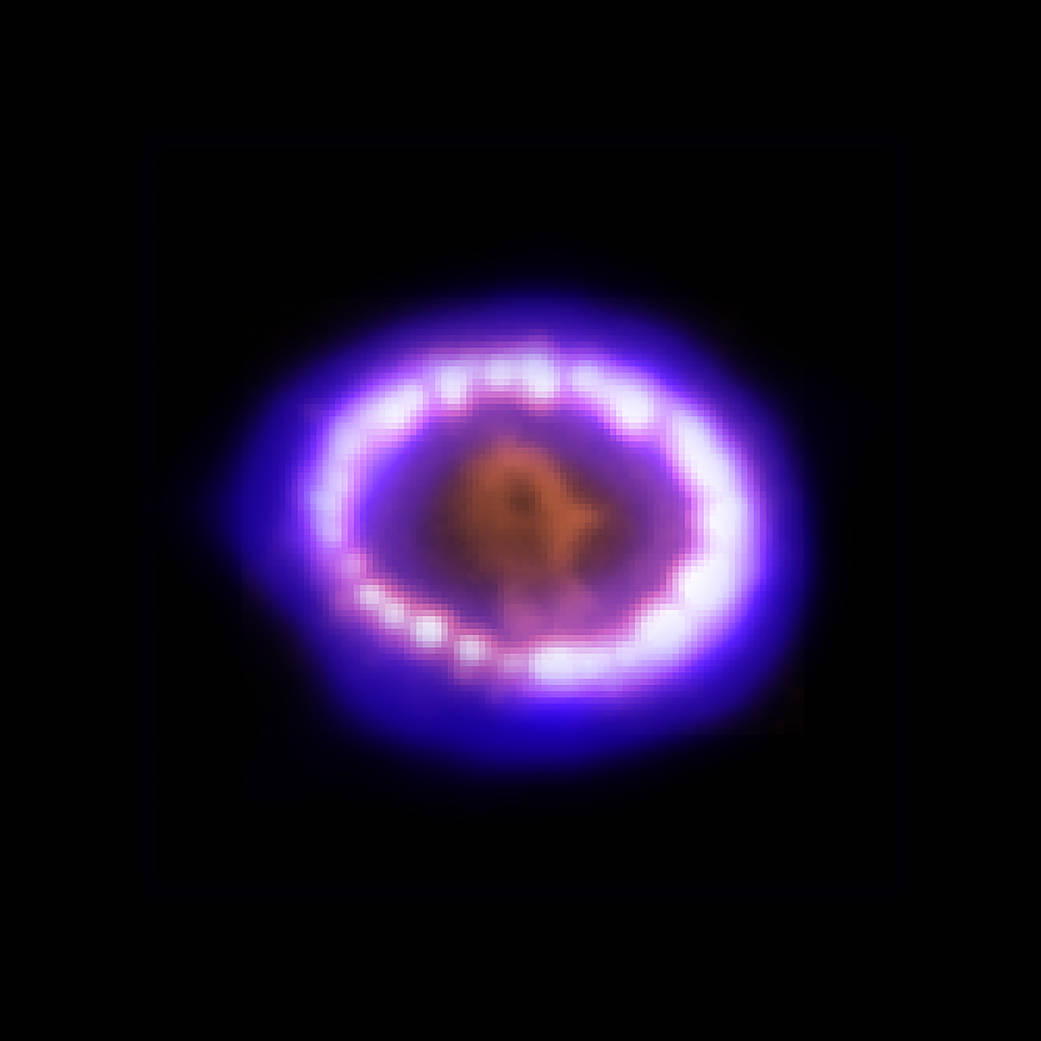On February 24, 1987, observers in the southern hemisphere saw a new object in a nearby galaxy called the Large Magellanic Cloud. This was one of the brightest supernova explosions in centuries and soon became known as Supernova 1987A (SN 87A). The Chandra data (blue) show the location of the supernova’s shock wave — similar to the sonic boom from a supersonic plane — interacting with the surrounding material about four light years from the original explosion point. Optical data from Hubble (orange and red) also shows evidence for this interaction in the ring.
Image credit: Radio: ALMA (ESO/NAOJ/NRAO), P. Cigan and R. Indebetouw; NRAO/AUI/NSF, B. Saxton; X-ray: NASA/CXC/SAO/PSU/K. Frank et al.; Optical: NASA/STScI



























